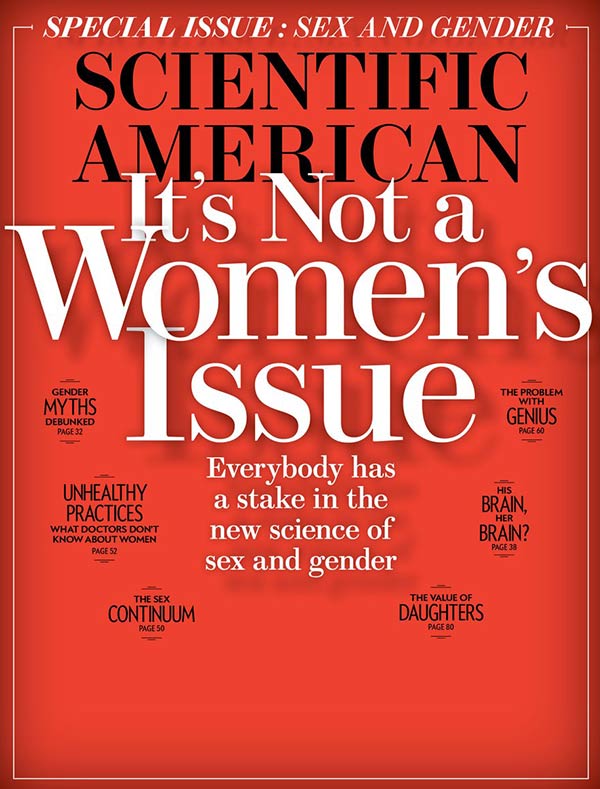Postmodernism vs. Science
The roots of the current campus madness

In a 1946 essay in the London Tribune entitled “In Front of Your Nose,” George Orwell noted that “we are all capable of believing things which we know to be untrue, and then, when we are finally proved wrong, impudently twisting the facts so as to show that we were right. Intellectually, it is possible to carry on this process for an indefinite time: the only check on it is that sooner or later a false belief bumps up against solid reality, usually on a battlefield.”
The intellectual battlefields today are on college campuses, where students’ deep convictions about race, ethnicity, gender and sexual orientation and their social justice antipathy toward capitalism, imperialism, racism, white privilege, misogyny and “cissexist heteropatriarchy” have bumped up against the reality of contradictory facts and opposing views, leading to campus chaos and even violence. Students at the University of California, Berkeley, and outside agitators, for example, rioted at the mere mention that conservative firebrands Milo Yiannopoulos and Ann Coulter had been invited to speak (in the end, they never did). Middlebury College students physically attacked libertarian author Charles Murray and his liberal host, professor Allison Stanger, pulling her hair, twisting her neck and sending her to the ER.
One underlying cause of this troubling situation may be found in what happened at Evergreen State College in Olympia, Wash., in May, when biologist and self-identified “deeply progressive” professor Bret Weinstein refused to participate in a “Day of Absence” in which “white students, staff and faculty will be invited to leave the campus for the day’s activities.” Weinstein objected, writing in an e-mail: “on a college campus, one’s right to speak—or to be—must never be based on skin color.” In response, an angry mob of 50 students disrupted his biology class, surrounded him, called him a racist and insisted that he resign. He claims that campus police informed him that the college president told them to stand down, but he has been forced to stay off campus for his safety’s sake.
How has it come to this? One of many trends was identified by Weinstein in a Wall Street Journal essay: “The button-down empirical and deductive fields, including all the hard sciences, have lived side by side with ‘critical theory,’ postmodernism and its perception-based relatives. Since the creation in 1960s and ’70s of novel, justice-oriented fields, these incompatible worldviews have repelled one another.”
In an article for Quillette.com on “Methods Behind the Campus Madness,” graduate researcher Sumantra Maitra of the University of Nottingham in England reported that 12 of the 13 academics at U.C. Berkeley who signed a letter to the chancellor protesting Yiannopoulos were from “Critical theory, Gender studies and Post-Colonial/Postmodernist/Marxist background.” This is a shift in Marxist theory from class conflict to identity politics conflict; instead of judging people by the content of their character, they are now to be judged by the color of their skin (or their ethnicity, gender, sexual orientation, et cetera). “Postmodernists have tried to hijack biology, have taken over large parts of political science, almost all of anthropology, history and English,” Maitra concludes, “and have proliferated self-referential journals, citation circles, non-replicable research, and the curtailing of nuanced debate through activism and marches, instigating a bunch of gullible students to intimidate any opposing ideas.”
Students are being taught by these postmodern professors that there is no truth, that science and empirical facts are tools of oppression by the white patriarchy, and that nearly everyone in America is racist and bigoted, including their own professors, most of whom are liberals or progressives devoted to fighting these social ills. Of the 58 Evergreen faculty members who signed a statement “in solidarity with students” calling for disciplinary action against Weinstein for “endangering” the community by granting interviews in the national media, I tallied only seven from the sciences. Most specialize in English, literature, the arts, humanities, cultural studies, women’s studies, media studies, and “quotidian imperialisms, intermetropolitan geography [and] detournement.” A course called “Fantastic Resistances” was described as a “training dojo for aspiring ‘social justice warriors’ ” that focuses on “power asymmetries.”
If you teach students to be warriors against all power asymmetries, don’t be surprised when they turn on their professors and administrators. This is what happens when you separate facts from values, empiricism from morality, science from the humanities.


September 23rd, 2017 at 1:31 am
What a column!
September 28th, 2017 at 10:01 am
This is a genuine question, not a rhetorical one: do we have stats on how many professors identify as post-modernists? Having worked as an educator in higher ed for a couple of decades now, I’ve barely seen post-modernism outside of religious studies, and maybe a subset of English. It is of course entirely possible that my experience is atypical (anecdotes are not evidence … ), which is why I ask (again, not rhetorically).